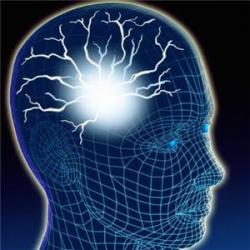Is Brain Nutrition A Key To Recovery?

Overview
Originally Published: 06/06/2011
Post Date: 06/06/2011
by Kenneth Blum, Ph.D
Attachment Files
Addiction Treatment | Is Brain Nutrition A Key To Recovery?
Summary/Abstract
Biochemical deficiencies or imbalances in the brain are a major factor in compulsive disorders such as craving for alcohol, drugs, or food. They can be caused by genetic deficiencies or by environment.
Content
Biochemical deficiencies or imbalances in the brain are a major factor in compulsive disorders such as craving for alcohol, drugs, or food. They can be caused by genetic deficiencies or by environment. By improving brain nutrition, we can help to correct these imbalances, opening the way to recovery. Sufficient improvement in brain nutrition can rarely, if ever, be brought about by diet alone. You can take in bananas and milk for an increase in tryptophan or serotonin; eggs or other protein for phenylalanine or dopamine; and cheese for tyrosine or norepinephrine, and it will help, but probably not enough. To materially affect brain nutrition, certain amino acids must be used in amounts high enough to make specific changes in the supply and balance of neurotransmitters and enzymes. Research findings in the last four decades strongly suggest that when the brain has adequate supplies of amino acids, the building blocks for brain chemicals, behavior tends to be normal. Inadequate or imbalanced supplies of these building blocks lead to deficits or imbalances in neurotransmitters and neuromodulators, causing abnormal and uncontrollable behavior such as the craving for, and addiction to, substances such as alcohol, drugs, or food. These behavior-controlling chemicals interact in complex patterns of stimulation and inhibition. For example, when dopamine stimulates adjacent neurons in a particular way, the individual experiences a feeling of well-being or pleasure, whereas GABA inhibits adjacent neurons and produces a calming effect. A shortage of dopaine reduces pleasure feelings and may lead to discomfort or craving; a lack of GABA my produce feelings of restlessness, tension, or anxiety. The overall pattern in becoming clearer: It resembles a cascade of progressive interactions involving many neurons, culminating in specific changes of behavior. For example: serotonin, endorphins, and GABA interact to cause a net release of dopamine and norepinephrine, and a stimulation of reward area in the brain. If the cascade is imperfect or incomplete, an imbalance results that may lead to craving and to possible addiction. Recent research has shown that neurotransmitter or neuromodulator deficits or imbalances can be caused by defective genes, by severe or long-continued stress, or by the destructive effects of alcohol or drugs. Kenneth Blum at the University of Texas Health Science Center at San Antonio, and Ernest Noble at the University of California at Los Angeles, showed that a defect in the dopamine D2 receptor gene is closely associated with a particularly virulent form of alcoholism. It is not uncommon to see a one-third reduction in dopamine D2 receptors in individuals who have this defective gene. This work, with particular reference to poly-substance abuse, has now been confirmed by others, including George Uhl at the National Institute of Drug Abuse. It is encouraging to note that in animal studies, the use of D-phenylalanine -- which does not come in food -- has been found to increase the supply of these receptors. Studies have shown that conditions in the environment having a stressful effect on the individual can cause a net reduction in the amount of dopamine present in the neuron. Fortunately, stress has a self-corrective effect; it weakens the blood/brain barrier, making it easier for amino acids such as L-tyrosine to reach the brain to initiate the manufacture of more dopamine. It has also been shown that long-term heavy drinking -- or drug use -- tends to destroy dopamine and the endorphins iin the neuron. But here, too, there is a countervailing effect. When there has been an intake of alcohol or cocaine, the blood/brain barrier is weakened, making it easier to channel amino acids into the brain, thereby improving the effectiveness of treatment. Increased L-phenylalanine,, for example, helps to make dopamine, and increased D-phenylalanine helps to prevent the breakdown of endorphins. L-tryptophan, involved in the manufacture of serotonin in the brain, helps to improve sleep and reduce craving for alcohol and sweets. It has now been discovered that chromium -- a natural trace element -- promotes the passage of natural tryptophan from diet through the blood/brain barrier into the brain, thereby achieving the desired beneficial result. Our increased knowledge of brain nutrition is good news, because as we find new ways to support the action of amino acids and other neuronutrients, the recovery process becomes less painful, the 12-step program becomes even more effective, and the probability of relapse is greatly reduced.





